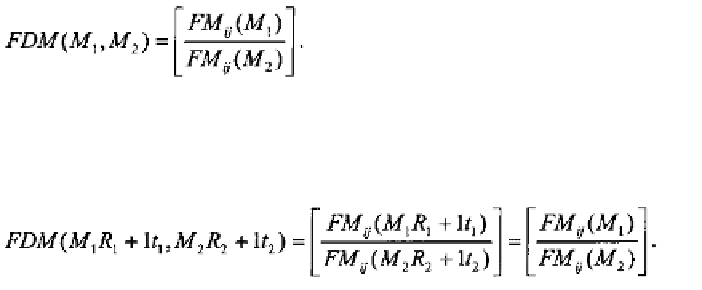Biology Reference
In-Depth Information
data potentially can refute or support the choice of the Normal model.
However, there is no potential for refuting or supporting a particular
choice of the side condition.
The situation in morphometrics is the same as above, except that
the group structure is more complicated, involving rotations and reflec-
tions. Since the choice of the side condition is not even potentially
refutable, we suggest that only those conclusions that remain invariant
to the choice of these side conditions are valid conclusions. Immediate
questions that come to mind are: what quantities do remain invariant
to the choice of the side conditions, and are they of any use in the sci-
entific inquiries? We address the first question here. The second issue
of scientific relevance is addressed in
Part 1
of this chapter.
4.17 Form comparisons based on distances
In the first part of this chapter, we have described various notions of
the form difference and shape difference matrix which consist of the
ratios of the corresponding distances in the two mean forms. Let us
look at one particular definition of form difference, the form difference
matrix, from the invariance perspective. Other notions, such as the
shape difference matrix, can be studied in a similar fashion.
Recall that the form difference matrix consists of the ratios of like
linear distances in the two forms, namely,
Now suppose we rotate, reflect and
translate the two forms, each one differently, and then calculate the
form difference matrix. We know that rotation, translation and reflec-
tion of an object does not affect the form matrix,
that is,
FM
(
M
)
FM
(
MR
1
t
)
.
It is clear that
FDM
(
M
1
,
M
2
)
FDM
(
M
1
R
1
1
t
1
T
,
M
2
R
2
1
t
2
T
)
. This measure
of form difference, thus, satisfies definition 1.
Let us now study some important mathematical properties of the
form matrix and related quantities.

Search WWH ::

Custom Search